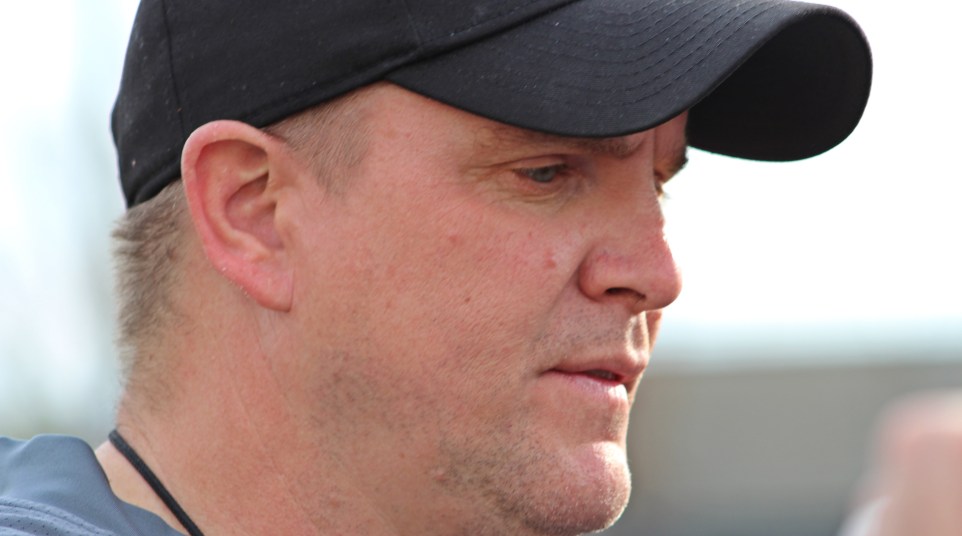
Tennessee's defense will look different in 2017 ... but will it play better?
KNOXVILLE, Tenn. — Tennessee’s defense can only get better from a lackluster performance in 2016 in which it gave up 449.2 yards per game.
Tennessee gave up 5.84 yards per play, costing the Vols a chance of winning the SEC East despite early-season victories over Florida and Georgia.
Injuries played a part in Team 120’s inability to stop the run in the second half of the season. The Vols gave up 218.5 yards per game on the ground, finishing 104th nationally.
Stopping the opposing passing game was an issue, too. Tennessee allowed 230.2 yards per game through the air, 71st nationally.
The defensive demise resulted in Butch Jones bringing in Charlton Warren as defensive backs coach — replacing Willie Martinez — and Brady Hoke to coach the defensive line as Steve Stripling moves to an off-the-field position.
Rock Gullickson also has been brought in from the NFL as strength and conditioning coordinator to address the injury issue.
Kongbo is coming
Losing both junior Derek Barnett and senior Corey Vereen on the defensive line hurts, but was expected.
Now second-year Tennessee defensive coordinator Bob Shoop and Hoke will look to Jonathan Kongbo, Darrell Taylor, Kyle Phillips and Deandre Johnson at defensive end to provide a pass-rushing presence.
Kongbo, 6-foot-6 and 270-pounds, was second on Team 120 in quarterback hurries (7), only behind Barnett’s 16.
The red-shirt junior, who only began playing football as a high school senior in Surrey, British Columbia, has the raw talent to be a disruptive presence in the opposing backfield. Kongbo can continue improving after showing signs of developing and understanding football at the SEC level late last season.
Kirkland leads linebackers
Darrin Kirkland Jr. has the ability to be the leader of the entire defense.
The junior showed vocal leadership qualities this spring to go along with his play-making abilities.
Following a 2016 season in which he produced 45 tackles in eight games, he is the true leader at linebacker with Jalen Reeves-Maybin having departed for the NFL. He now realizes that he is “the main guy, the leader of the defense.”
More coverage options
Year No. 2 in the Shoop defense might look different from year No. 1, as far as the ability to play multiple fronts as needed.
Player familiarity with Shoop will play a role along with the coordinator having some of his own coaches under him in Hoke and Warren.
This spring Shoop said that he is “looking forward to Year 2 and putting my stamp on things.”
He also elaborated that “you may see more 4-3 than 4-2-5 concepts, but to the naked eye it won’t look a whole lot different.”
The flexibility and the depth to play multiple looks will be in Tennessee’s favor. Having the ability to run a 4-3 scheme against the pro-style looks of SEC East foes Florida, Georgia, South Carolina and Vanderbilt is key. So is being able to run a 4-2-5 against Kentucky and Missouri, which rely heavily on the spread.
Shutdown corner
Shaq Wiggins joins Tennessee as a graduate transfer from Louisville, returning to the SEC (Georgia, 2013). He will add to an already competitive group at cornerback.
Even considering Wiggins’ experience, Emmanuel Moseley might be the team’s shutdown corner this year.
The 5-foot-11, 180-pound senior brings maturity and experience to go along with the speed it takes to be a pressure-coverage guy in man-to-man schemes. Moseley has been talented enough to play in 39 games, starting 19, since his freshman season in 2014. He has 22 pass break-ups in his Tennessee career.
One stat that must improve
For opponents last season, creating first downs was a take-your-pick option against Tennessee. Opponents could run (136 times), pass (135) or accept penalties (22) for first downs.
Tennessee can’t allow it to be that easy or that balanced this season.
Better or worse?
Tennessee’s defense will no doubt be better from a season ago – it can only get better.
The staff additions of Hoke and Warren will provide a new set of eyes and instruction to repair the deficiencies. And Gullickson should help decrease the number of injuries. His strength and conditioning program was already producing visible results this spring.
When Shoop took the defensive coordinator position at Tennessee in January 2016, he mentioned that his unit would have an “in-your-face style” and be “built on relentless pursuit, never ending pressure, good fundamentals and techniques.”
Shoop has proven at Vanderbilt and Penn State, under James Franklin, that he can coordinate a defensive in a major conference. With the new additions, he should be comfortable with his staff. Everything seems to be in place for a turn-around season.
Having depth and more players comfortable in his system, Shoop should be able to show multiple coverages in a 4-3 look, a mixture of three-man fronts, and a secondary that can provide man-to-man coverage in the nickel and dime schemes.
All in all, year No. 2 for Shoop at Tennessee should be better than year No. 1.
